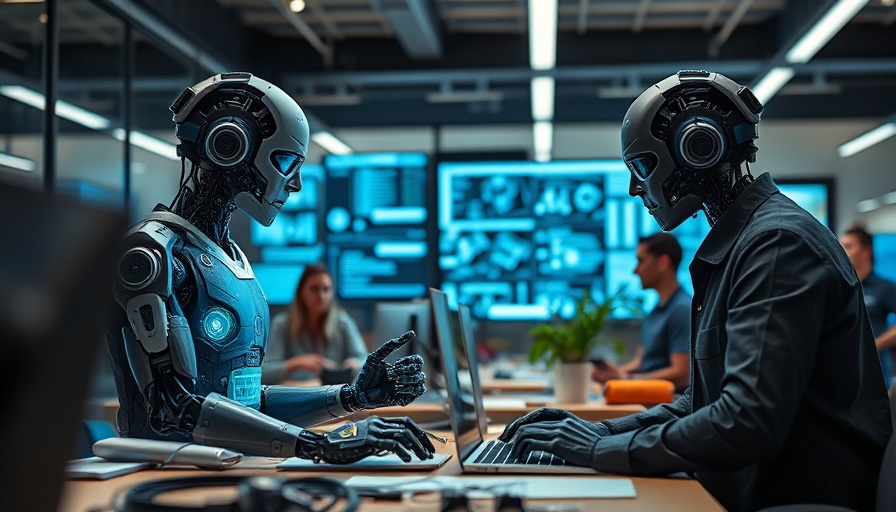
Understanding AI's Current Influence on Tech Jobs
As AI technology continues to advance, especially with generative and agentic AI making waves, its precise impacts on employment remain a topic of curiosity and concern. Interestingly, rather than eliminating jobs, recent studies reveal that AI might actually be facilitating job growth in specific fields. Particularly, the tech sector has indicated positive shifts, which can act as a barometer for the broader job market.
Rising Demand in Tech Roles
Evidence suggests that technology roles are evolving, with many organizations looking to ramp up hiring. Approximately 69% of tech leaders are planning to increase their teams to harness AI capabilities. This trend reflects a growing acceptance of AI not as a replacement but as a complement to human skills. As the Federal Reserve Bank of Atlanta reported, the demand for AI skills across various job postings has surged from 2% in 2010 to a striking 12% in 2024 for computer and mathematical occupations. This transformative shift unveils a new era where tech jobs are increasingly intertwined with AI.
AI's Role in Skill Development
The emergence of AI is reshaping the skill sets required by employers, demanding a more hybrid blend of human capability and AI collaboration. The ongoing growth in AI-related job postings signifies that roles previously considered unrelated are now embracing AI skill requirements. The ability to work alongside AI resources is becoming invaluable in sectors such as architecture, engineering, finance, and management.
Future Implications for Job Markets
As AI agents are capable of segmenting tasks and optimizing solutions, they stand poised to radically change the workloads within many professions. This evolution calls for a shift in the way we view employment—moving from a traditional framework to one that recognizes the symbiotic relationship between human and AI tasks. By understanding the nuances of these changes, individuals can better prepare for the future of work.
Embracing the AI-Enhanced Future
It’s crucial for workers, especially in tech-related fields, to stay informed and adaptable. While the integration of AI into job roles might seem intimidating, it offers immense opportunities for skill enhancement and career growth. Grasping the competencies that AI requires can lead to greater job security and a revitalized workforce.
Conclusion: Be Prepared for Change
With technology continually evolving, embracing the changes AI brings isn't just an option; it's a necessity. Understanding the ongoing shifts in job markets will empower professionals to adapt and thrive. As we navigate this AI-enhanced landscape, it’s vital to remain proactive and take advantage of the tools available to ensure relevance in the workforce. Bypass ANY AI Detector with ease with Prompt2Human.
 Add Row
Add Row  Add
Add 




Write A Comment